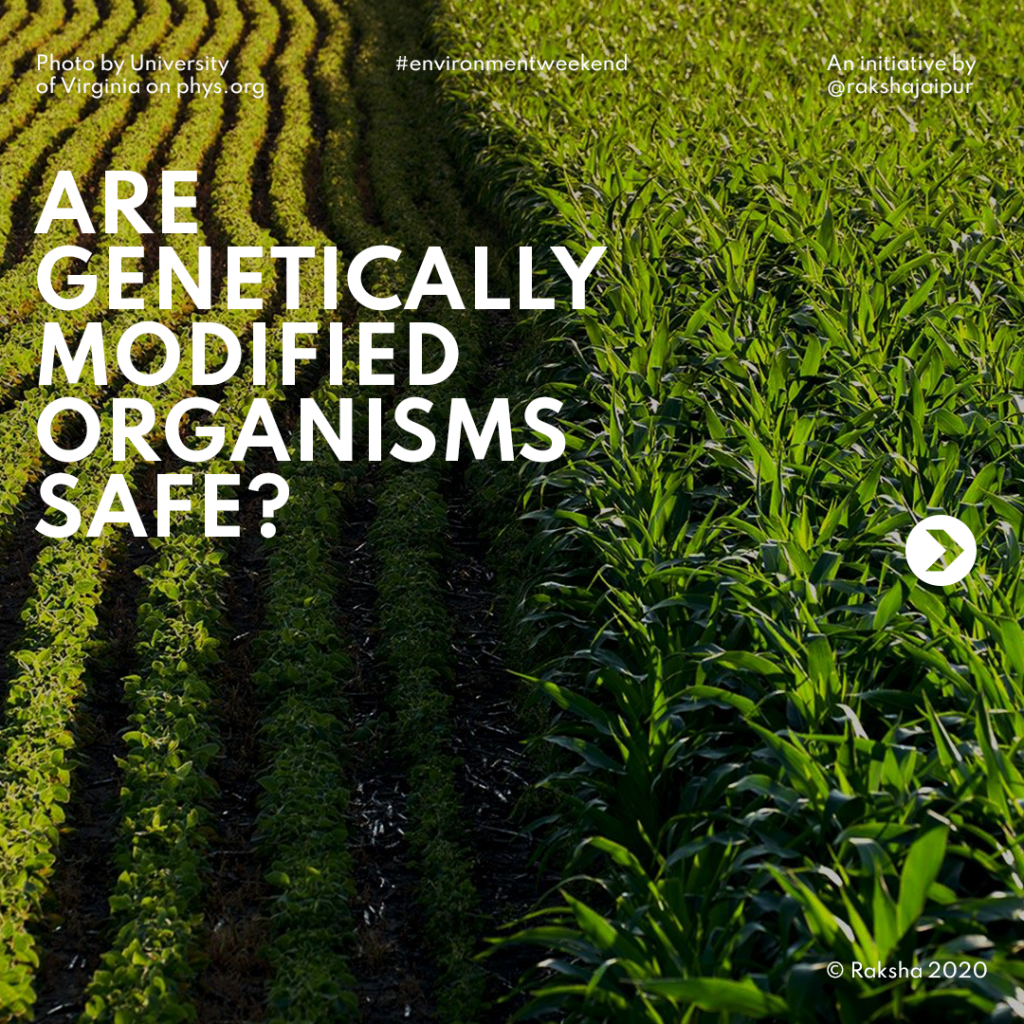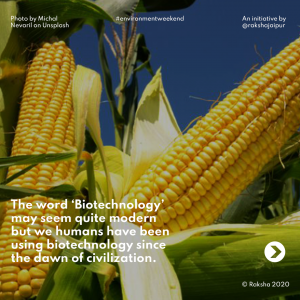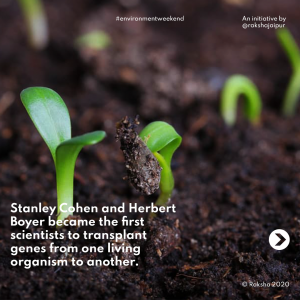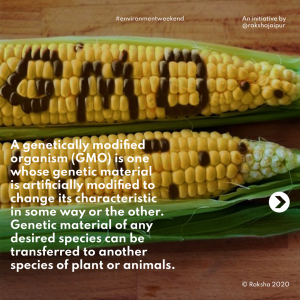
The word ‘Biotechnology’ may seem quite modern but we humans have been using biotechnology since the dawn of civilization. The yeast used for making bread, the fermentation technique for breweries, cheese, yoghurt making and the algae used for baking of cakes and pastries are all a part of biotechnological process used since ancient times. Selective breeding of plants and animals were carried out in past to produce domesticated varieties without the knowledge of conventional Biotechnology. 40 years ago, nobody knew that you can transfer the gene of one organism to another one’s genome Today people think that biotechnology is all about manipulating DNA, but it’s actually more than that. From production of food, farming, and pharmaceuticals, Biotechnology has been incorporated in our lives since more than a decade. It all began with the breakthrough discovery of the structure of DNA by Watson and Crick. The knowledge that DNA carries the genetic information paved a way to new techniques that allowed the manipulation of DNA according to human needs.

Soon after, cloning experiments and genetic engineering followed. Stanley Cohen and Herbert Boyer became the first scientists to transplant genes from one living organism to another. They made the first genetically modified organism- a bacteria resistant to antibiotic Kanamycin in the year 1973. This was the birth of recombinant DNA technology. Later this technique was used for the production of Human Insulin- the first commercially available biotechnological product. Since then major progress has been made within the areas of Biotechnology especially in medical sector which raises highest number of both ethical and legal issues.

A genetically modified organism (GMO) is one whose genetic material is artificially modified to change its characteristic in some way or the other. Genetic material of any desired species can be transferred to another species of plant or animals. Introduction of a foreign gene into an organism can result in various outcomes that can be either beneficial or harmful because the pattern of gene expression gets altered.

Most of the GMO’s are produced mainly for laboratory and research purposes. These are model animals used to study the function of specific genes and how they affect health and diseases. Example- mice, pigs, bats, rabbits, birds etc. Some GMO organisms are produced for human consumption. Atlantic salmon has been genetically engineered to mature faster and US Food and drug administration has stated that these fish are safe to eat. Atlantic salmon was engineered by AquaBounty technologies by introducing two sequences of DNA into these Salmons- the first sequence codes the growth hormone and the second sequence activates the growth hormone year round, the result being that fishes now develop at a dramatically increased rate.
The first genetically engineered plant introduced around mid-1900’s was Tobacco. Today, more than 90% of commercially available corn, soyabean and sugar beets are genetically modified. The genetic engineering has led to higher yield, resistant to pests and diseases, longer shelf life, and even great taste. It has also reduced the use of chemical pesticides by farmers and it is cost effective for consumers. Thus genetically modified (GM) crops are kinder to environment and economically beneficial.
The only problem with genetically engineered organism is that they are not a natural creation. Inserting genes of one organism into another can lead to possible allergies and deaths. This has led to ethical issues in biotechnology. If a GMO escapes, it can introduce engineered genes into wild populations which we definitely don’t want. GMO can cause genetic pollution if released in wild. Uncontrolled gene flow can affect genetic diversity. If an introduced gene is advantageous than a naturally occurring one, then it can be replaced easily in environment. This gene will multiply rapidly than the natural genes and soon replace the wild relatives.
Although there is a little evidence that GMO’s have impacted our genetic diversity today but scientists are aware of the potential influence that genetically engineered organisms have on our biodiversity. Therefore ongoing research and investigations are focused more on how to prevent crossbreeding and spreading of GMO’s. AquaBounty’s Salmon was a concern for scientists due to its uncontrolled growth. Now the issue was that what if Salmon escaped into the wild? To prevent this from happening, AquaBounty uses both physical and Biological method of containment. The Salmon are all females grown in land based tanks and are sterile due to increased chromosomal number. Such approaches and innovative ideas can be used in future to prevent the unwanted spread of GMO’s.
In India, the only approved GM crop till date is BT cotton, which has resistance towards Lepidoptera order of insects like butterfly and moths. The area under BT cotton has increased in India from 0.29 lakh hectares in 2002-2003 to 117.47 lakh hectares in 2019-2020. Other GM varieties of crops like corn, maize, brinjal etc available are available around the world but not in our country because these GM crops are banned. Genetically Engineered Approval Committee (GEAC) has been set up in India under the ministry of Environment, Forest and Climate change, to regulate the use, manufacture, storage, export, import of hazardous organisms especially genetically engineered ones.
So far
there has been no evidence of harm by the consumption of genetically engineered
crops. They have definitely helped our farmers to protect the yield from
insects and weed. GMO food provides better nutrition and are engineered to
contain compounds good for health. In future, GMO’s are likely to play and
important role in biomedical research too. However, the tough question still
remains- how long can we prevent the spread of GMO’s to the natural
environment? Do let us know what you think about it.
